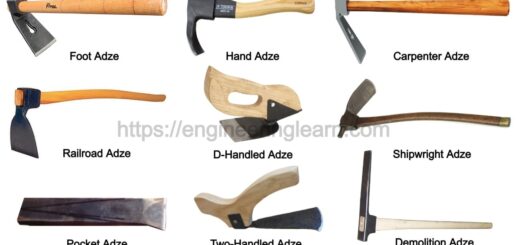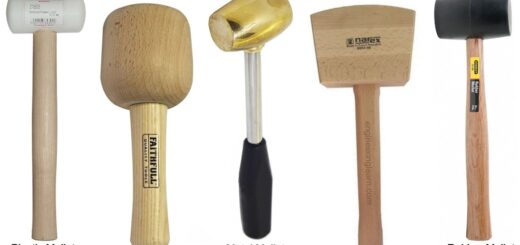14 Types of Screwdriver and Their Uses [with Pictures]
![Types of Screwdriver and Their Uses [with Pictures]](https://engineeringlearn.com/wp-content/uploads/2021/07/Screwdriver-1024x539.jpg)
What is a Screwdrivers?
Types of Screwdriver and Their Uses [with Pictures] :- A screwdriver is a mechanical tool which is used for turning screw. It consists of a metal rod with a flat or cross-shaped end that fits into the top of the screw head.
14 Different Types of Screwdrivers
Following are the different types of Screwdrivers:
- Phillips screwdriver
- Flat head (Slotted Head) screwdriver
- Torx screwdriver
- Hex Screwdriver or Hexagon Screwdriver
- Pozidriv Screwdriver
- Robertson or Square screwdriver
- Clutch head or Bow tie screwdriver
- Frearson (Reed and Prince Screwdriver)
- JIS (Japanese Industrial Standard)
- Hex socket or hex screw drive
- Magnetic screwdriver
- Battery operated screwdriver
- Right angle screwdriver
- Ratcheting screwdriver
1. Phillips Screwdriver: ( Types of Screwdriver )
A person named Henry Philips, in the 19th century invented the Philips screwdriver. The main aim behind the invention of this type of screwdriver was to introduce a new variety of screwdrivers in the industries, that is, the power driven screwdriver.
Phillips screws can be identified by a plus on their heads, are widely used for construction and woodworking purposes. It is also known as the crosshead screwdriver as the X-shape blade fits into the head cavity firmly so it provides better traction when tightening or loosening the screw. These drivers are such designed to slip out of the head when a certain torque limit is exceeded, which depends upon strength and weakness of the screw.
2. Flat Head or Slotted Head Screwdriver: ( Types of Screwdriver )
As the name suggests a flat-head screwdriver has a wedge-shaped flat tip which is used to tighten or loosen screws that have a linear notch on their heads. This is the most common tool on the mechanical field.
It can be manual driven or power driven, however, not mostly power driven because slotted head has ‘cam- out effect’. Cam-out effect is a process by which the screwdriver slips off from the surface of the screw head, when the torque applied on the surface of the screw head exceeds a certain limit or sometimes due to lack of centering, which eventually causes the damage to the screw head or screwdriver tip.
The flat head screws are commonly used in furniture construction, small cabinetmaking projects, and in some electrical applications but are not extensively used in residential construction anymore.
3. Torx Screwdriver: ( Types of Screwdriver )
Torx screwdriver has a star shape tip with 6 rounded lobes. Torx was initially used for security purpose but now it is found in many other applications also. Because of the circular geometry of the lobes there is low radial force required in a torx screwdriver, which increases the life of the screw and the screwdriver bit.
Presently, Torx drivers are mainly used in appliance industry and security fields because of its efficiency.
4. Hex Screwdriver or Hexagon Screwdriver: ( Types of Screwdriver )
It has six straight lobes, like hexagon. These are used to fasten mostly bolts rather than screws. It requires a hex key screwdriver also known as Allen key screwdriver to tighten or loosen.
No slipping effect takes place while driving this hence most of the power driver tools can be fitted with hex arrangement bits and thus makes the production fast and easier with minimized error.
5. Pozidriv Screwdriver: ( Types of Screwdriver )
Pozidriv also is known as “Pozidrive”. Unlike Phillips screwdriver, the pozidriv screwdriver has two cross sign which are offset at 45 degree angles from the main blades.
This type of screwdrivers have blunt tips and small ribs on the blade between the main edges which increases the torque and reduces the risk of cam-out effect. This drive is extremely popular in manufacturing because of its self-centering design.
6. Robertson or Square Screwdriver: ( Types of Screwdriver )
The square screwdriver also known as Robertson screwdriver is named after a Canadian inventor.
This type of screwdrivers constitutes the highest torque than all drive types. Square head screws are mostly found in the automotive and furniture industries because of their durability. Slight Taper shape at the front of the tool provides a good locking with the screw and thus makes it more comfortable for use and also neglects the cam out effect.
7. Clutch Head or Bow Tie Screwdriver: ( Types of Screwdriver )
The slots look like a bow-tie and in the older versions there was a circular cavity in the middle.
Clutch head also have a security version that is slotted one way and it is very difficult to remove it. These are found mostly in places where maintenance is not frequent, such as bus stations or prisons.
Clutch head screwdriver types mostly used in the automotive industry and are very popular with older GM vehicles.
8. Frearson or Reed and Prince Screwdriver: ( Types of Screwdriver )
The Frearson type of screwdriver is similar to Phillips. The first difference is Frearson has sharp tip whereas Phillips has a rounded tip. Also, the angle of the tip is at 45 degrees which means a single Frearson screwdriver can be used on any size of Frearson screw and for many Phillips screws. Its advantage is that it avoids typical problems such as shattering and premature bit wear.
The shape helps the Frearson screwdriver to generate greater torque than a Phillips screwdriver which helps to use it in nautical equipment and specified areas where precision is required.
9. JIS (Japanese Industrial Standard): ( Types of Screwdriver )
JIS (Japanese Industrial Standard)is one of the most recognized types and probably the most commonly used driver in the toolbox for fastening cross-point screws. It looks similar to the Phillips head but it is designed to resist camming out.
Its main advantage over the Phillips screwdrivers is that it has self-centering and quick tool and screw engagement.
It allows torque and over-tightening to be controlled by the operator and not by the head of the screw.
10. Hex Socket Screwdriver: ( Types of Screwdriver )
Hex socket drivers have a socket instead of a blade or tip, thus it acts as a socket wrench. The hex socket screw driver has a hexagonal cavity driven by an Allen key, hex key, or hex screwdriver. Socket wrenches have a handle that operates parallel to the surface of the bolt, requiring additional space to turn. With the straight handle in Hex screw drive the bolt requires less clearance to turn. These screwdrivers can make the process of loosening and tightening hex nuts, bolts, and screws much faster and easier.
11. Magnetic Screwdriver: ( Types of Screwdriver )
The magnetic screwdriver has the magnetic tip which holds the screw and with that you can place or extract the screw single handedly. It is applicable in small electronic industries when trying to place screws in hard-to-reach locations. Its use is easy as they stick to our screwdriver.
We can magnetize our existing screwdriver easily using a earth magnet instead of buying new sets of magnetic tipped screwdrivers.
12. Battery Operated Screwdriver: ( Types of Screwdriver )
There are many electric drives that use a battery as a power source which makes them very compact. This tool is not ideal for heavy driving or drilling, it is perfect for general light screw driving tasks. These types of screwdrivers don’t have the power as other power tools have but it is a space saver.
For example, we can use it to fix screws in computers without disassembling it.
13. Right Angle Screwdriver: ( Types of Screwdriver )
As the name suggests, it is a right angled screw driver. These type of screwdrivers helps to work where there is no space for straight handle. They are very useful in automotive and similar fields.
The ratcheting mechanism provides enough torque for tightening and loosening hardware.
14. Ratcheting Screwdriver: ( Types of Screwdriver )
Ratcheting screwdrivers reduce the lift as well as save operation time. It repositions the screwdriver tip automatically after every turn. Ratcheting screwdrivers consists of an internal ball bearing mechanism that allows the user to make multiple turns of the screw with an easy back-and-forth wrist action.
By switching a button on the screwdriver the ratcheting action can be changed from one direction to the other so that it is applicable to insert screws in clockwise directional motion and remove screws in the counter-clockwise direction motion.













